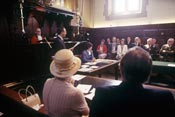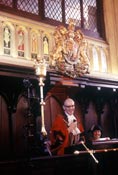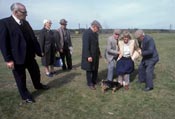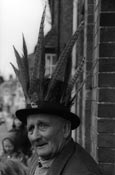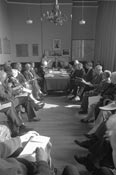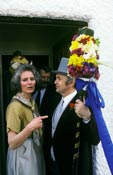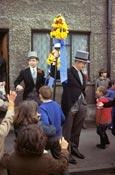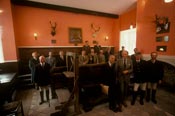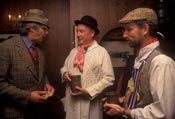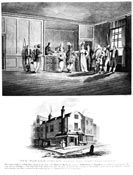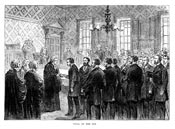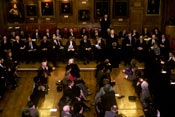
It is much more complicated, but essentially the Court Leet (or Court Baron) was the lowest form of court used by the Lord of the Manor to exercise judicial rights over his tenants and settle disputes between them. Criminals were dealt with in a higher court. Over the centuries they dwindled away as their local functions were replaced by statutory bodies. They were finally relieved of their jurisdiction by Act of Parliament in 1977 - with a few exceptions such as the Verderers’ Courts in forests and the one that administers Laxton’s surviving field system, while a few others live on solely to administer ancient common land. Hungerford’s Hocktide Ceremonies are a good example; famous for its ‘Tuttimen’ it is really about land granted to the village by John o’Gaunt in the 14th century and is still owned by 100 householders in the town, who attend (or are fined if they don’t) the Court Leet to deal with valuable grazing and fishing rights, while the Tuttimen gather token tithes and make themselves famous. About 30 courts keep going with no jurisdiction whatsoever but simply for old times sake. A short Google search will reveal exactly what they do get up to, which ranges from genuine good works for the people of the manor to ceremonial which makes the self-important feel important. Piepowder Courts, presided over by local dignitaries, were temporary courts set up when the fair or market was in town. They had full jurisdiction to deal with disputes, theft, bad behaviour, drunkenness and the like but serious crime was passed on to higher courts. They delivered summary justice since the people on trial were soon on their way to the next fair. Piepowder Courts declined through the 17th century but the last record of one is dated 1898. The Trial of the Pyx has been going on annually since 1282 to test the quality of coins produced by the Royal Mint. It was once necessary to do this though modern production methods make it unlikely that shortcomings would be detected today. Nevertheless thousands of coins are still gathered from regular production and a sample of these is tested by six assayers from the Company of Goldsmiths who present their findings at a formal ceremony at Goldsmiths Hall - which, needless to say, is not open to the public. So you have to make do with an 1877 illustration!
